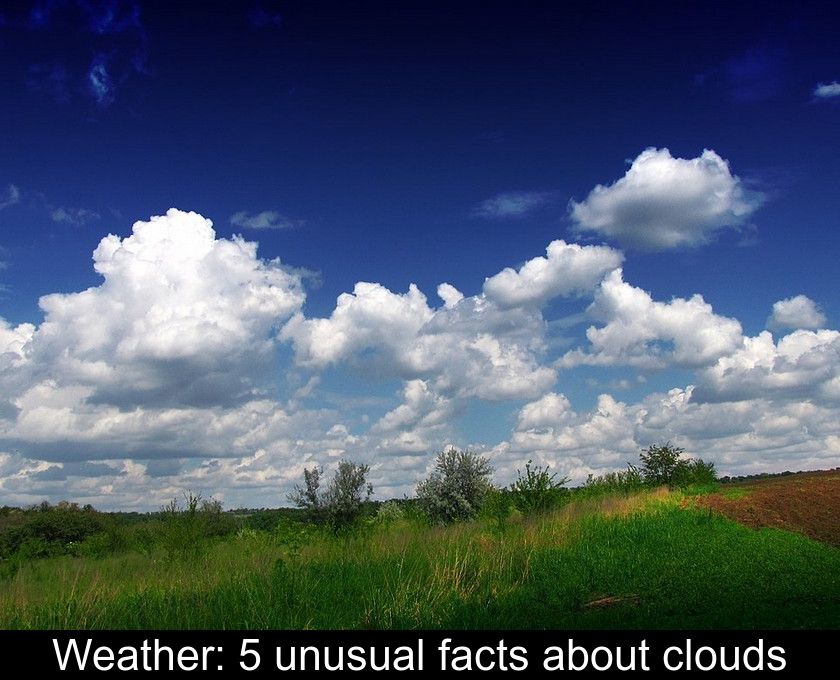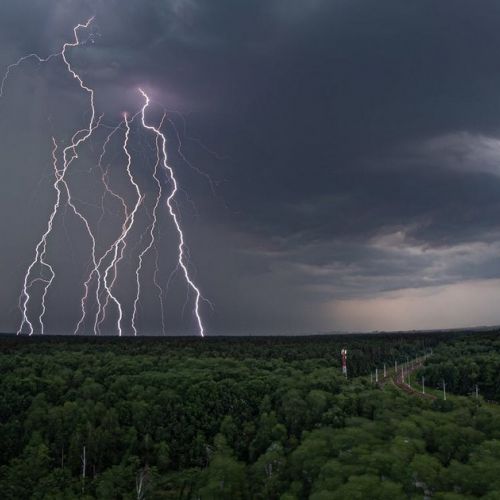Weather: 5 Unusual Facts About Clouds
March 29th is International Cloud Day. On this occasion, we propose to learn more about these giants composed of water droplets suspended in the atmosphere. Here are 5 unusual facts that you probably don't know about clouds.
1- Clouds weigh tons.
When you look up at the sky, cumulus clouds appear light and fluffy like cotton balls in the atmosphere.
This type of cloud forms when water vapor in rising warm air cools and begins to condense into tiny droplets that remain suspended in the air.
Despite their appearance, this cloud is light enough to float and move with the wind. However, a typical cumulus cloud one kilometer long and one kilometer high can weigh between 1000 and 2000 tonnes!
2- Clouds are actually colorless.
The cumulus and nimbus clouds passing above our heads present different colors, ranging from the purest white to the darkest gray, not to mention the pinkish or reddish hues they can take at dusk. But, in reality, clouds are colorless because they are only composed of water droplets. The colors we perceive when we look at them are due to the phenomenon of light diffusion. The color of a cloud varies depending on its thickness. A thin or less dense cloud lets light pass through and appears as white. On the other hand, a thicker and denser cloud allows less light to pass through and therefore appears in a darker shade of gray.
3- Some clouds have a flying saucer shape.
The shape of a cloud depends on several factors, including environmental and atmospheric conditions. Therefore, different types of clouds have very variable shapes. Some are truly amazing, such as the waves of the asperitas cloud or the shape of the lenticular cloud (altocumulus lenticularis).
This type of cloud, which mostly forms above mountains when there is a lot of wind, is a stationary cloud in the shape of a plate. As it resembles a flying saucer, some witnesses of this weather phenomenon think they are dealing with a UFO!
4- It is possible to make a cloud rain.
Usually, rain starts to fall when water droplets suspended in a cloud combine to form heavier drops. When these drops freeze in the atmosphere before reaching the Earth's surface, the precipitation turns into snow, hail, or freezing rain.
But did you know that it is possible to artificially trigger rain using a technique called cloud seeding?
This technique, used in some very dry countries like the United Arab Emirates, involves injecting salt or silver iodide crystals into a cloud to increase the condensation of water vapor and cause a downpour.
However, this process for triggering rain is controversial due to the pollution and meteorological disruptions it can cause.
5- There is an International Day of Clouds.
This is to alert the general public about the risks of such manipulations that the writer and former lawyer Mathieu Simonet launched the International Day of Clouds in 2022. This day, set on March 29th, aims to request the creation of a legal status for clouds from the United Nations in order to protect cirrus and other cumulonimbus clouds.
At a time when many states are considering manipulating clouds to make it rain, these practices raise several questions:
• Who owns the water in the clouds?
• Do these manipulations have an impact on climate change?
• How can they be legally regulated?
If you too want clouds to be protected and continue to belong to everyone, you can participate in the International Day of Clouds on March 29th on social media: simply take a picture of a cloud and post it on Instagram with the hashtag #StartToLookUp!









